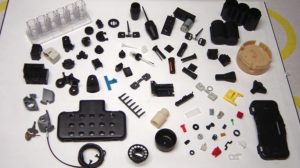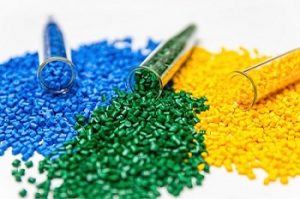When the Wright brothers built the first airplane, they used wood and fabric as their main construction elements. Though a great starting point, the weight and flammability of the materials weren’t ideal. The search for better aerospace materials has continued ever since.
In 1970, plastic revolutionized the aviation industry by reducing the weight of aircraft and improving fuel efficiency. Today, plastics in aerospace are everywhere, with both commercial and military aircraft using the material in various sections of their planes, such as navigational function components, structural elements, and interior parts.
Comparing Plastic and Metal Parts for the Aerospace Industry
Plastic is now the dominant material in several industries, including aerospace, surpassing traditional choices such as metals and aluminum. Because of plastic’s versatility, aircraft builders incorporate them into their projects.
The benefits aircraft manufacturers enjoy from using plastic include:
- Reduced Costs.
- The manufacturing industry is always looking for new ways to improve productivity and reduce costs. Plastic is far more affordable than metal, which is a cost-effective solution both as a raw material and during the production process. Considering the economic pressures that manufacturers are feeling around the world, it’s no surprise many are transitioning to using aerospace plastics to take care of their bottom line.
- Improved Productivity.
- Working with metals in manufacturing requires machining and finishing, which slows down the production time. Further, CNC machines are limited to the number of parts they can shape and cut per day. For manufacturers, this makes achieving a high productivity rate difficult. On the other hand, plastic through injection molding ensures accuracy and speed, resulting in an ample supply and availability of crucial aerospace parts.
- Unmatched Durability.
- Metal parts are often subject to the effects of external elements, which can lead to corrosion and deterioration — points of failure that mean more maintenance and more cost. With plastics, the nature of certain resins remains durable in high-stress environments, as airplane plastics must be able to withstand severe physical conditions. Today’s premier aircraft plastic parts offer one of the best ways to navigate these challenges.
- Hazard Protection.
- Plastic is safer to use in aircraft, especially when considering fire hazards. There’s a reason an aircraft’s interior has plastic materials in many places, such as windows or overhead bins. Plastic is far more resistant to fire and helps prevent a situation from getting worse through material failure. Even some of today’s lightweight aircraft canopy options use plastics, such as gliders.
Different Types of Plastics the Aerospace Industry Uses
Now that you’re aware of why the aerospace industry has gravitated toward plastics in recent decades, let’s look at the plastic resins that are available for aerospace part manufacturers. As it’s crucial to select the ideal materials for aerospace production, the range is extensive. Below, some of the materials that feature most often in aerospace parts manufacturing.
Polyetheretherketone (PEEK)
This advanced aerospace polymer is one manufacturers prefer mainly because of its durability. It can operate optimally at various temperatures while remaining highly resistant to high-pressure steam and water. It’s the perfect material for use in heavy-duty scenarios, such as within valves for water or gas seals. Polyetheretherketone is also excellent for mechanical functions such as gears and other elements.
Polychlorotrifluoroethylene (PCTFE)
This material is similar to PEEK in terms of resistance to corrosion and temperature. Primarily, this polymer is ideal for setting up a barrier in mechanical applications. Typically, this type of material features valves and valve gaskets, which are essential components within the workings of an aircraft.
Thermosetting Polyimide
This polyimide is a polymer used as plastic insulators for nuts and bolts. Perfect for electricity resistance, it rejects electrical charges instead of carrying them to parts sensitive to electricity.
Polytetrafluoroethylene (PTFE)
Better known as Teflon, PTFE features mainly in the wrapping of wires. Aerospace engineering requires wires, tubes, and other lines running back and forth across aircraft. This plastic offers a layer of protection that doesn’t rust and won’t catch fire.
Polyamide-imide (PAI)
The PAI is probably the aircraft plastic that has replaced metal in the aerospace industry the most. It boasts a high heat resistance of up to 500 degrees fahrenheit. If this type of plastic catches fire, it won’t release smoke, making it critical for safe evacuation processes.
Ultra-high-molecular-weight polyethylene (UHMWPE)
This aerospace plastic is incredibly lightweight and durable. Compared to steel products, this plastic is also resistant to external elements, which is why you’ll find it on an aircraft’s wings and wingtips.
There are different types of aircraft plastics for various applications. Whether you need small or large parts, most aircraft builders opt to include plastic parts wherever they can.
Sourcing Quality Parts From a Reliable Plastics Supplier
Given unpredictable fuel prices, it’s crucial for aircraft builders to develop lighter, more fuel-efficient planes. One of the easiest ways to do this is to use aerospace plastics. In addition to reducing production costs, the parts are highly durable and remain functional for extended periods of time. The future of aerospace lies with a blended approach to materials selection.
Reliant Plastics is a reputable supplier of the materials necessary for aircraft manufacturing, defense applications, and more. We’re here to help our clients achieve the best outcome with every project by using our in-depth knowledge of plastics and their properties, as well as domestic and international manufacturing capacities. Let us help you explore acquiring plastics for aircraft parts in Texas.
To better understand plastics for aerospace applications, contact our team.




